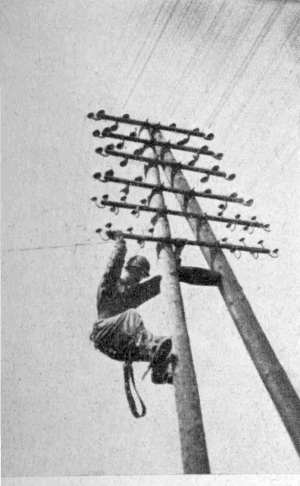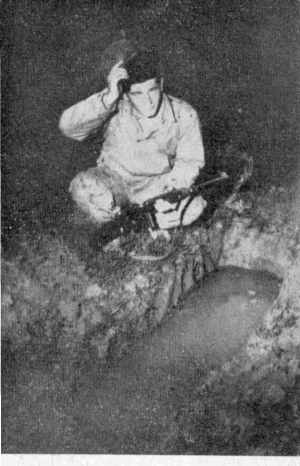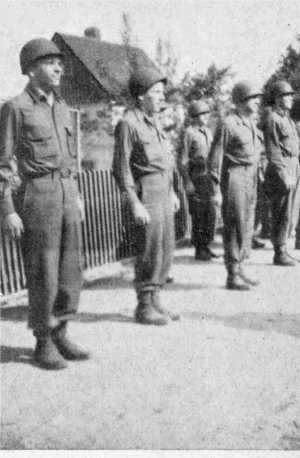"You Asked Me, Buddy, what a Headquarters Battery does."
Let me take you to the corner of a wood on the forward slope of the frigid, snow covered hills to the northeast of Bastogne. In the first light of day, the Forward Observer, in his tank turret, scans through his glasses a valley one thousand yards to the east. Suddenly, he grabs his radio, "Hello, 28 Baker, Fire Mission, Fire Mission; Coordinates 416753; Enemy Tanks and Infantry; Request all additional artillery; Will Adjust." On through the Fire Direction Center to the four, five, or six artillery battalions, the fire mission is transmitted by radio , and after a few preliminary rounds, hundreds of shells screaming overhead go down in a lethal blast of hell into the valley a thousand yards to the east. Jerries dive for the shelter of foxholes. Many are hit, and the screams and groans of the wounded are heard during the lulls in the explosions. The metallic ring of steel on steel resounds in the crisp air as enemy tanks and tracks are hit and burst into flames. These effects are the result of untiring efforts of men who spent long cold hours maintaining the black watch so that fire missions and other vital messages could and would get through.
These are the men of Headquarters Battery
In the yard of a shell torn convent, waiting in snow and frost, a small group of men are gathered about an instrument set up in snow. A large red toy balloon ascends, is caught by the wintry blasts, and drifts skyward toward the south. Following it with their gaze, men of the instruments take readings as it goes by. These are the men who record the ever changing wind and weather and apply it to the data which makes the fire of our guns more effective.
These are the men of Headquarters Battery
A Nebel Werfer ("Screaming Mimi") with its unearthly screech descends and bursts with a frightful explosion which rocks the walls of the Fire Direction Center. The S-3, who at the moment is engaged in conversation with the S-3 of the 101st Airborne Artillery, ducks and crouches instinctively, and almost drops the receiver. Still somewhat shaken by the blast he attempts to pick up the conversation . . . "Hello, Reed, we had a close one." Silence. "Hello, operator." He turns the crank of the field telephone nervously. "Hello, operator, get me Comet three again." A pause. "I'm afraid the line is out, Sir. That last one must have gotten our wires. The men are going out to cheek it." To check the line, these men are going out into the shell torn street to grope along the wires in the stygian darkness, stumbling, falling, cursing, risking their lives in the shellfire, but always finding and mending those breaks in those vital wires.
These are the men of Headquarters Battery
There are the men who drive "peeps," the tank, and trucks by day and night over little known roads, often scarcely cleared of enemy mines, reconnoitering, carrying messages, bringing up the vital supplies from far off supply dumps.
These are the men of Headquarters Battery
And there are the officers and men who keep the midnight vigil, standing at the firing chart or rolled in a bedroll on a grimy floor, ready on a moment's notice to convert urgent messages into commands which will bring a wall of bursting shells in front of our defending troops, or blast a way for our attackers.
These are the men of Headquarters Battery
The story of the faithfulness of these men; the story of their courage will never be completely told but they are bound together in the camaraderie of brave men-at-arms who have fought a good fight. Their leader has said to them, "Well done."

One of Division Artillery's wiremen defying all threats to a communication line. This one won't be cut.

22 October, '44
Sad Sack looks disgustedly at his slit trench somewhere in France which holds two feet of water following several days of heavy rain.

"Tenhut!" And away they gon on one of those conditioning marches. Ossa, Germany, May, '45.
NOTE: Remove question mark from address below when sending email
This page is maintained by Bruce Frederick, EMAIL.
Last updated: March 2, 2002


